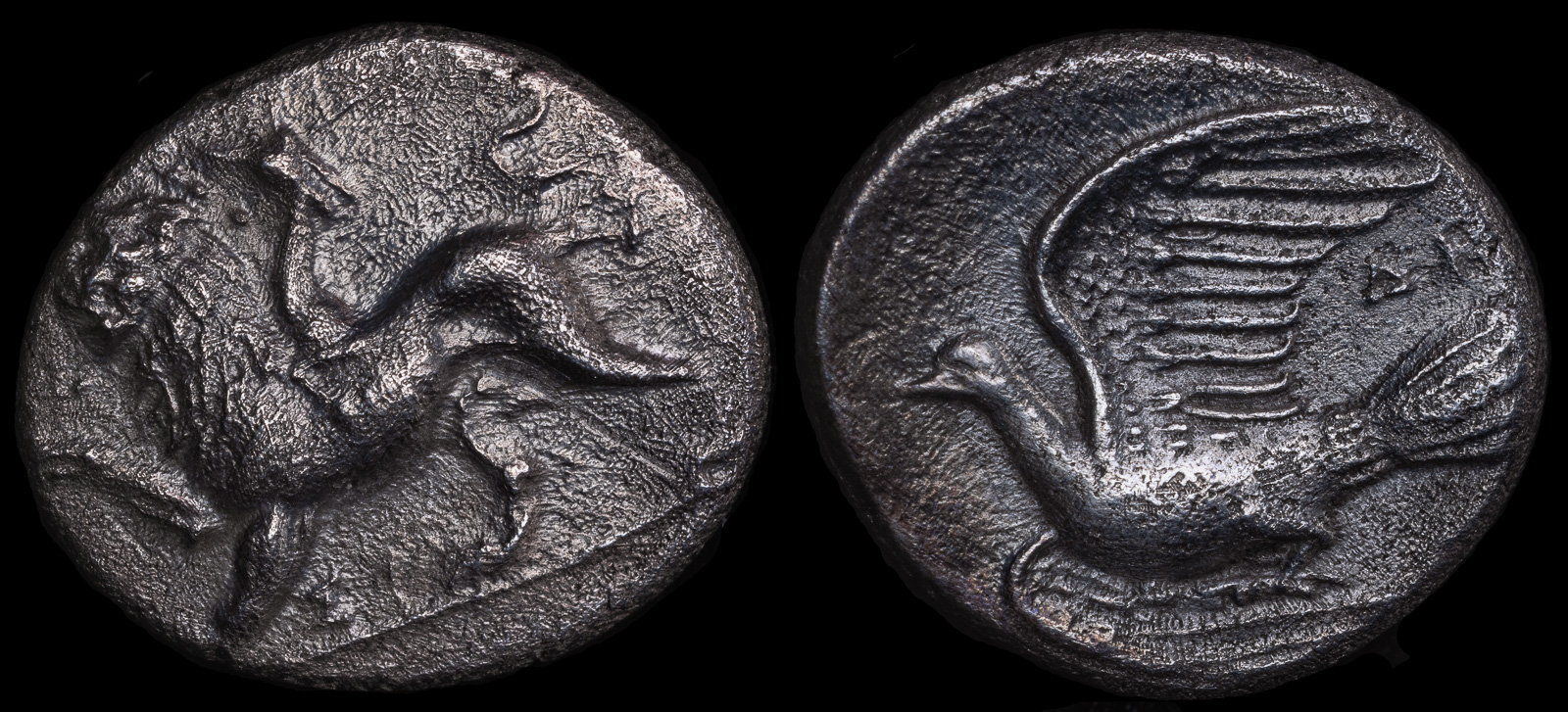
SIKYONIA. Sikyon
Circa 330-280 BCE
AE Triobol 15,5 mm, 2.72 g, 6 h
ΣΙ Chimera standing left with right forepaw slightly raised.
Rev. Dove flying left; above tail feathers, ΔΙ.
HGC 5, 213. BCD Peloponnesos 299
Sikyon was one of the major players around Greece in ancient days, and Pausanias goes into depth to list the twenty-six ancient kings of the city, ending with Agamemnon of Homeric fame. For much of its history it remained on the side of Sparta. In fact, during times of need its currency was often used by its ally – especially during the Peloponnesian War. Sparta did not mint coins during this time.

Sikyon
Circa 330-310/05 BCE
Tetrachalkon Bronze, 17.5 mm, 3.25 g, 5 h
Dove flying to right
Rev. Small Θ within laurel wreath tied bellow
BCD Peloponnesos 307.7. Traité II, 813, pl. 222, 14. Warren, group 5, 6i
During the 4th century BCE, numerous artists hailed from the city. Easily the top painters throughout Greece practiced or learned there, though none of their original works remain. The sculpture Lysippos was from Sikyon and is considered one of the three greatest ancient sculptors. Most of the works known from him today are copies, with the possible exception of one piece in the Getty Museum. One of his pupils, Chares of Lindos, created the Colossos of Rhodes which was one of the seven ancient wonders of the world.
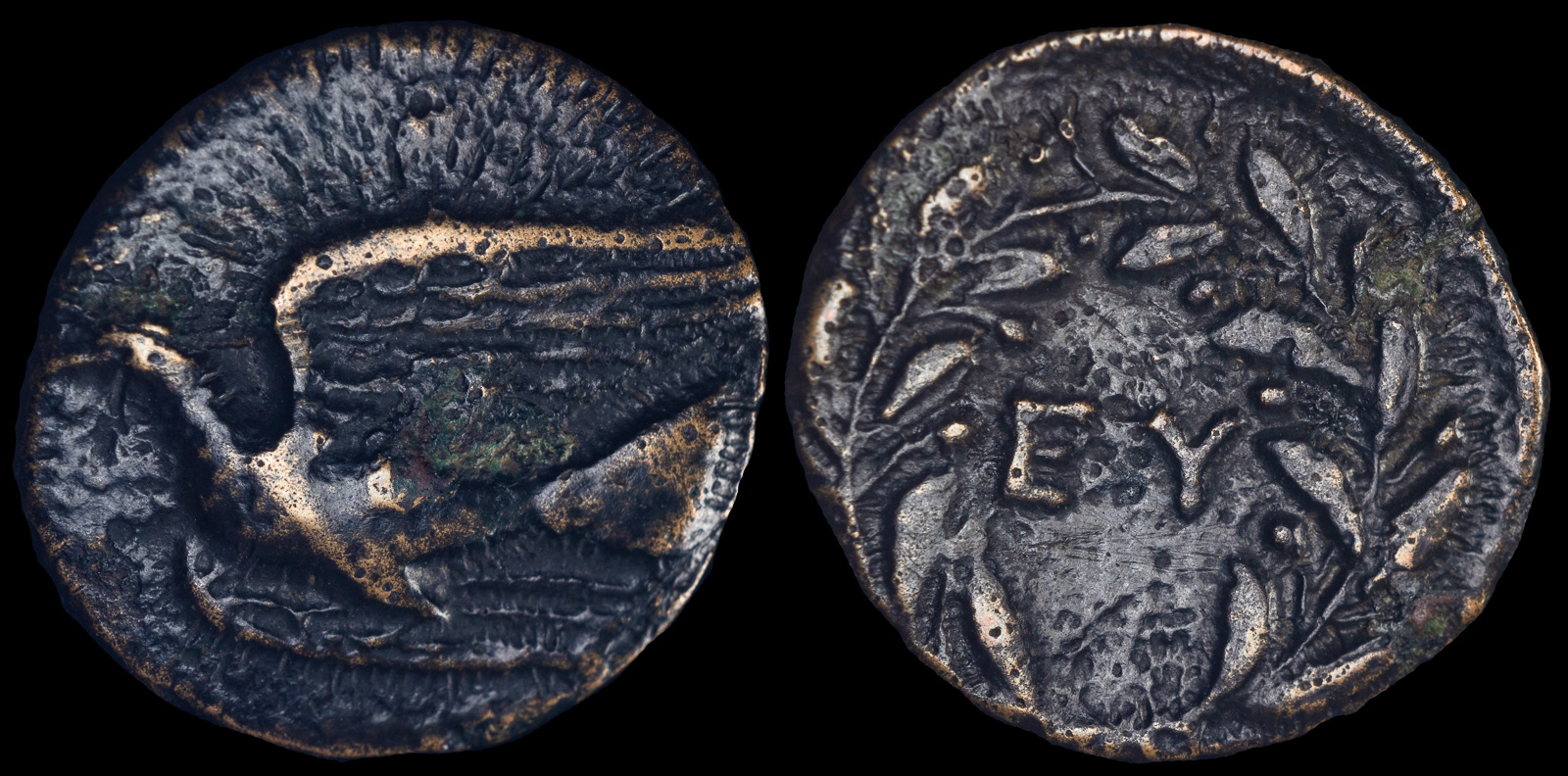
Sikyonia, Sikyon
330-310/05 BCE
Æ Dichalkon 16mm, 2.29g, 1h
Dove flying l. R/
EY within wreath tying below.
BCD Peloponnesos 305.6
Lysippos was also the personal sculptor of Alexander the Great. Of the painters, we believe we have some copies of Apelles’ works in Pompeii, including a famous painting of Alexander the Great in the Battle of Issos.
In 323 BCE, democracy was introduced to Sikyon, but it would be short lived. As a consequence of the Lamian War, Macedonia took control. From 314 to 308 BCE, Sikyon was nominally independent under Kratesipolis, the wife of the former Macedonian commander. She ruled herself for six years before Ptolemy I convinced her to hand over the city to her.
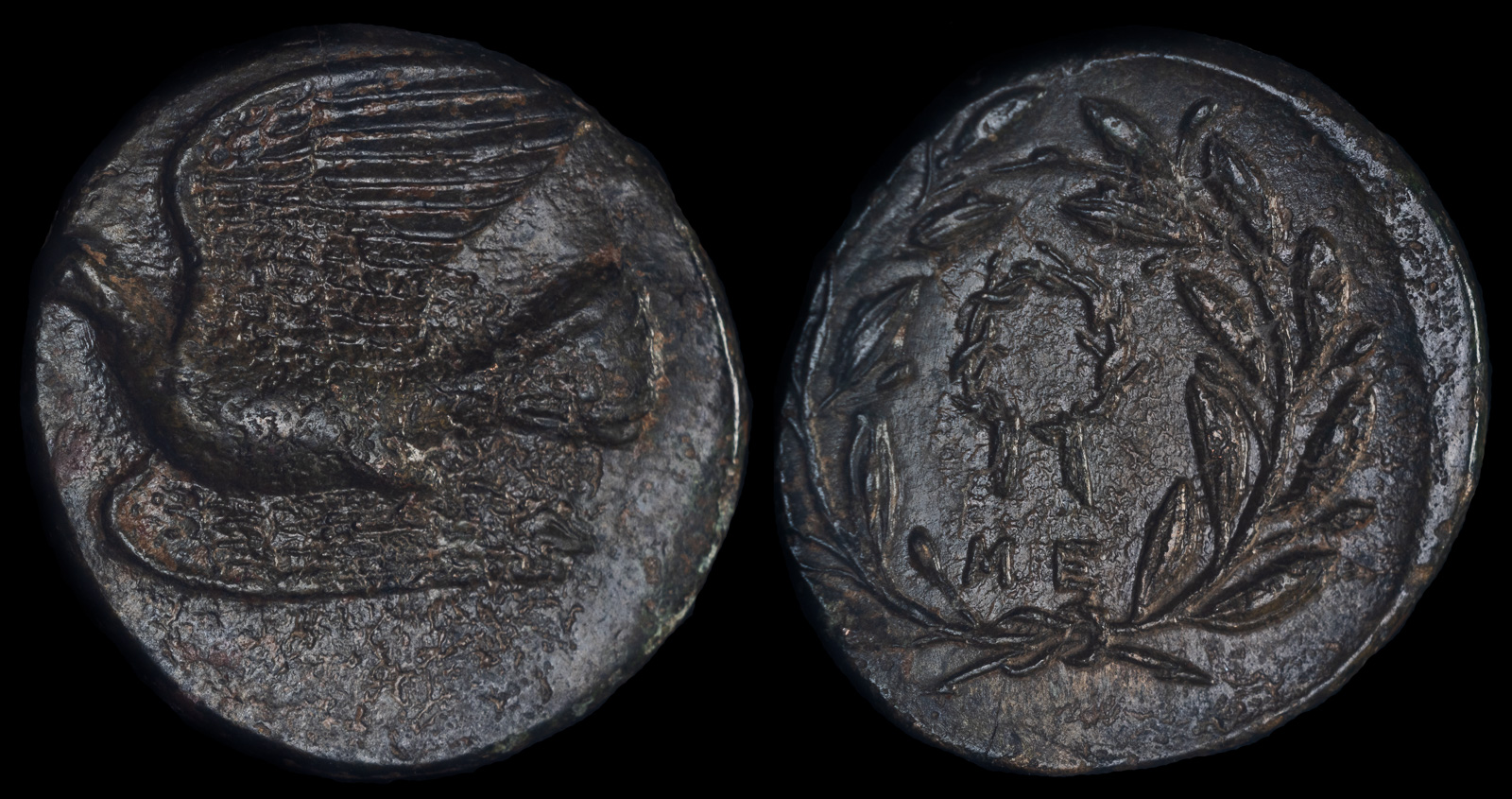
Sikyonya, Sikyon
Circa 330-310/05 BCE
Æ Dichalkon 16.38mm 3.52g
Dove flying right /
Wreath above ME; all within wreath.
Warren, Bronze group 5, series 1, 3a; BCD Peloponnesos 309-10; SNG Copenhagen –
Sikyon remained under Lagid control until it was conquered by Demetrios I Poliorketes in 303 BCE. Most of the original city was destroyed and then rebuilt. After his death, the city wavered between tyrants and democracy until Rome took over.
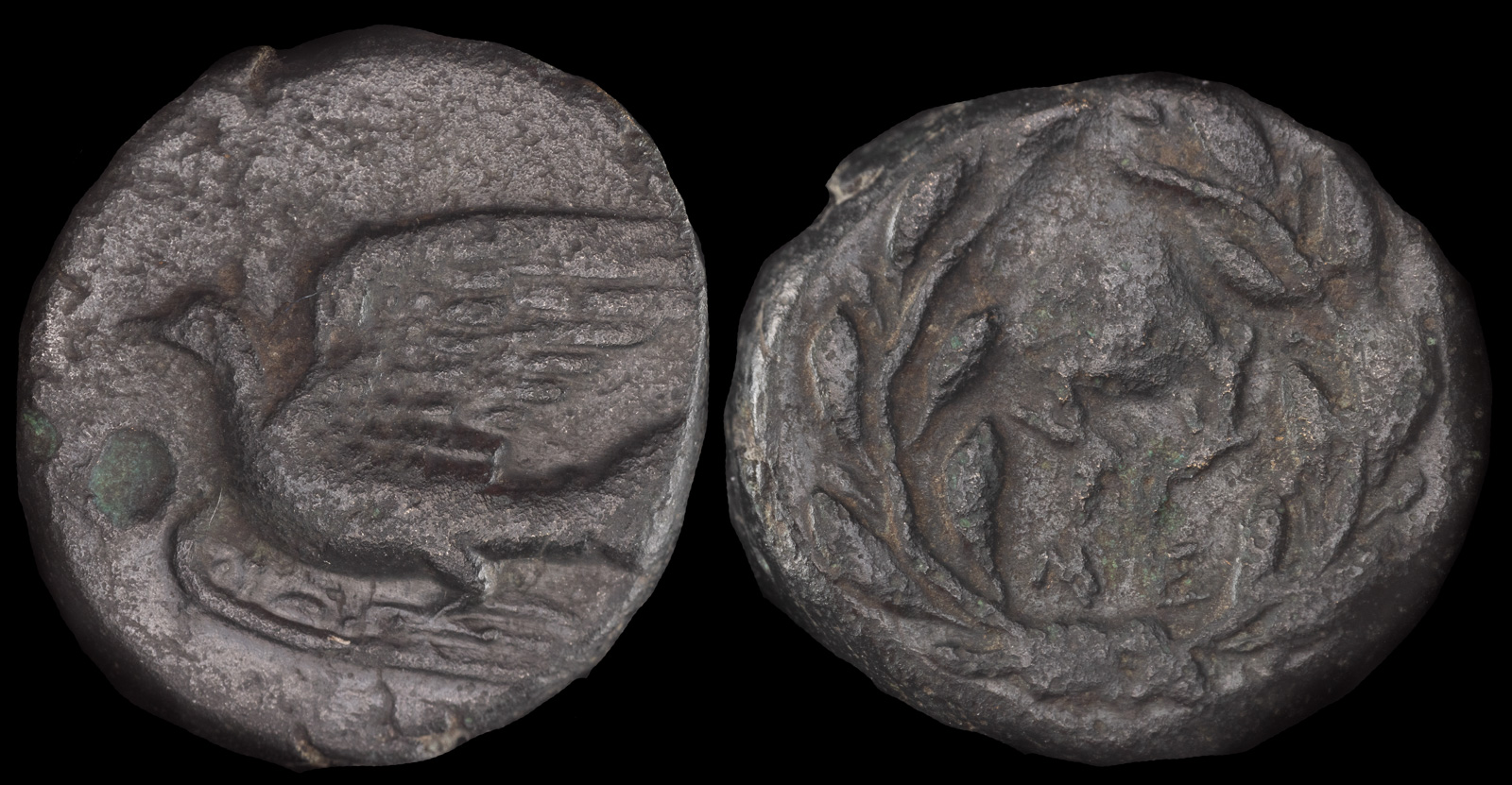
Sikyonia, Sikyon
ME, magistrate
circa 330-310/5 BCE
Ae 14,5mm 3,94g
Obv: Dove flying left.
Rev: Olive wreath containing smaller wreath an ME.
HGC 5, 257 var. (no symbols mentioned)
Per Athenaios, there was a temple to Athena Kolokasia, which was a type of root, in Sikyon.
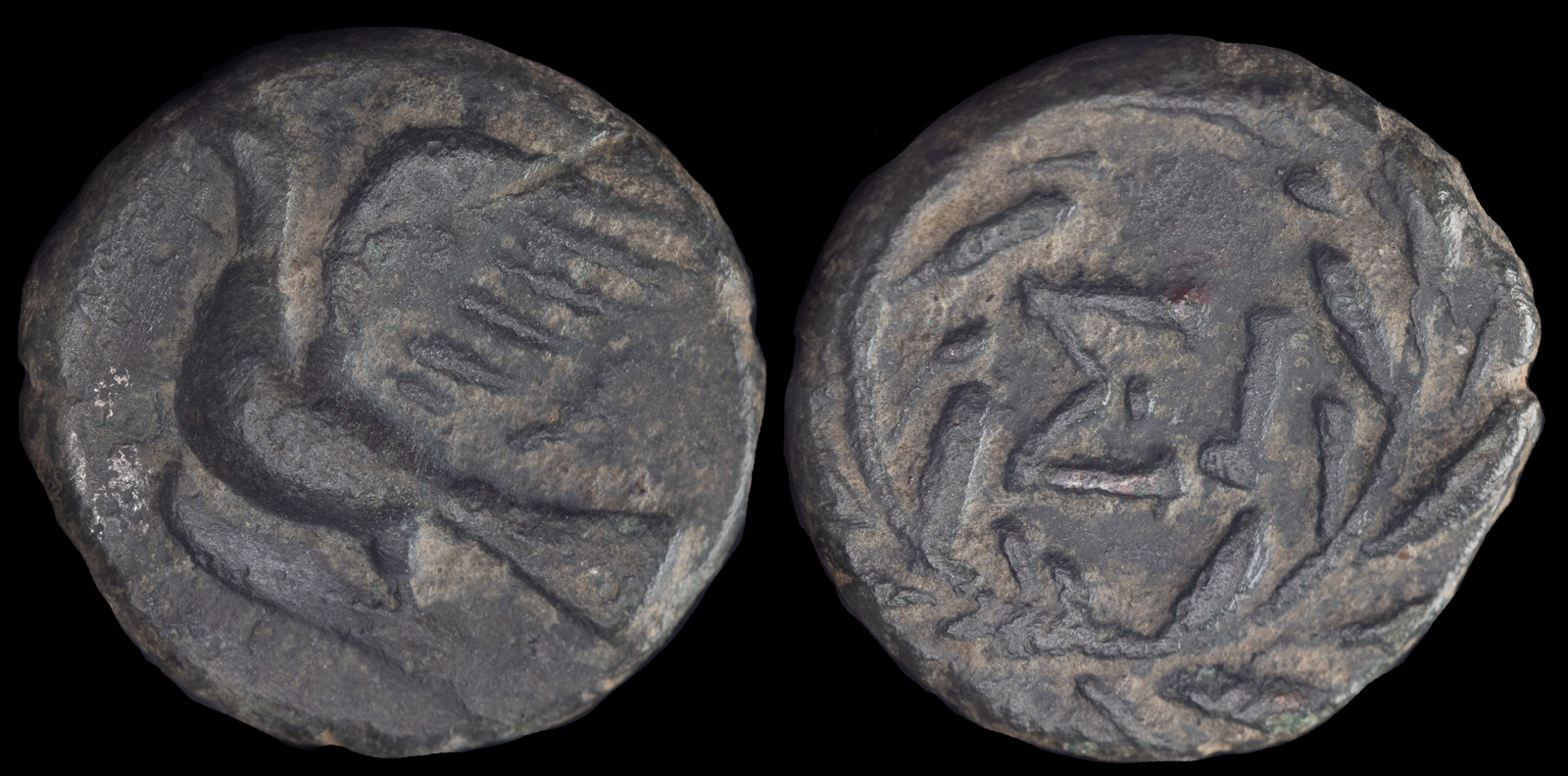
Sikyonia, Sikyon
circa 250-200 BCE
Ae 12mm 2,11g
Obv: Dove flying left.
Rev: Large ΣI within olive wreath.
HGC 5, 270
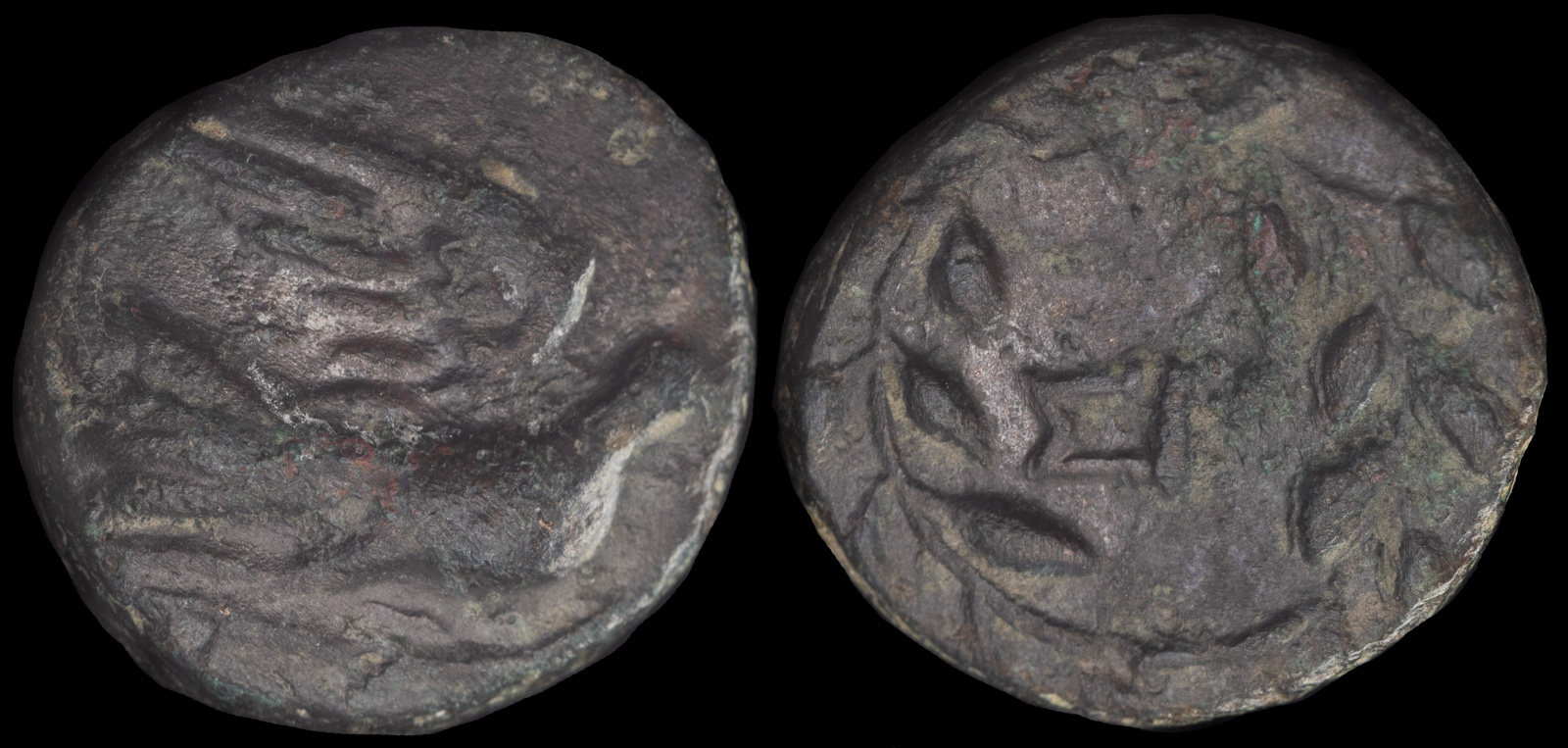
Sikyonia, Sikyon
circa 250-200 BCE
Ae 12mm 2,10g
Obv: Dove flying right.
Rev: Large ΣI within olive wreath.
HGC 5, 273
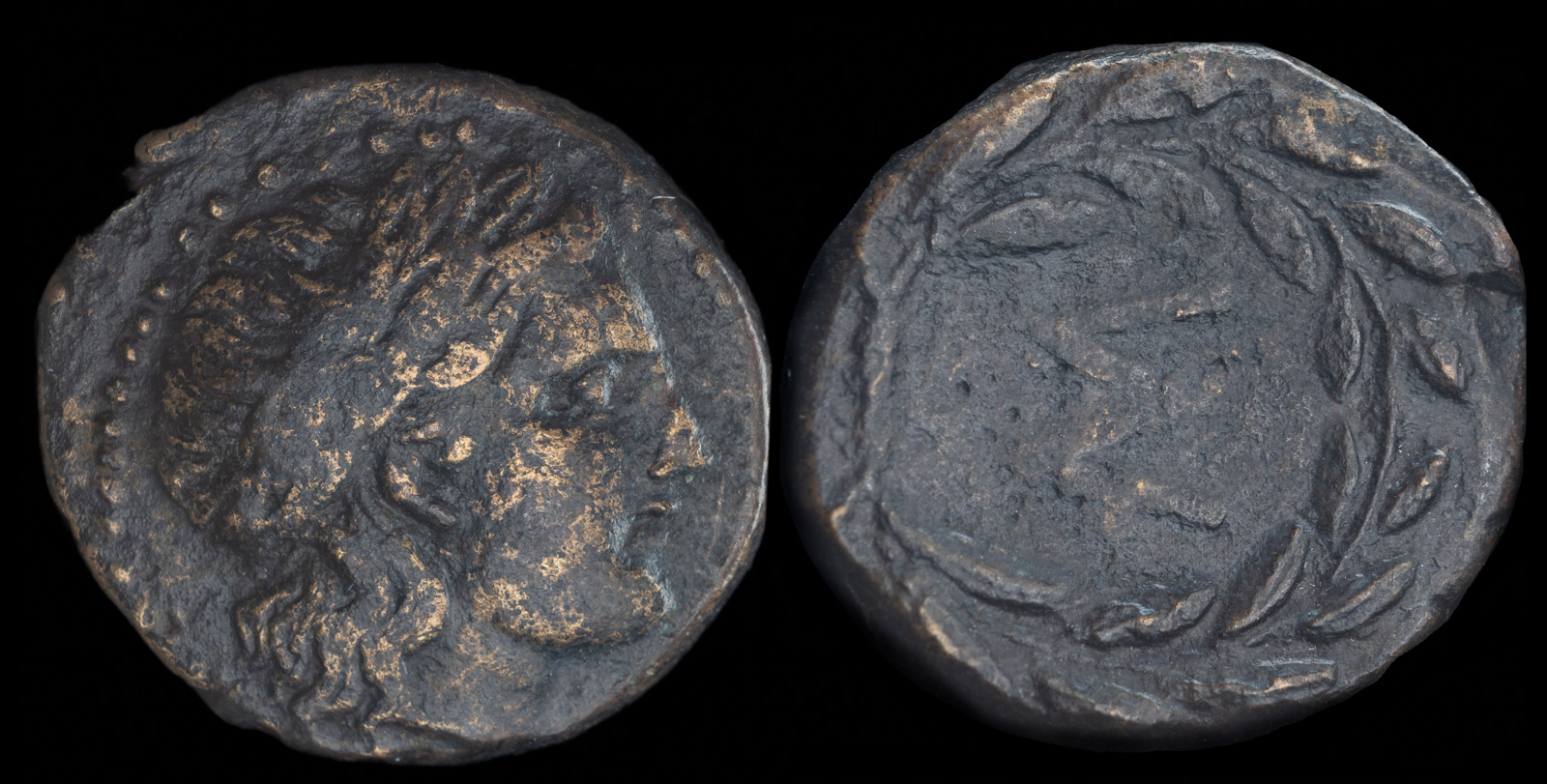
Sikyonia, Sikyon
Circa 345/25 BCE
Bronze, 17.5mm, 5.98g, 6h
Laureate head of Apollo to right
Rev. Σ within an olive wreath, ME to left field
BCD Peloponnesos I 282. BMC 172. HGC 5, 256
Ex John Aiello collection
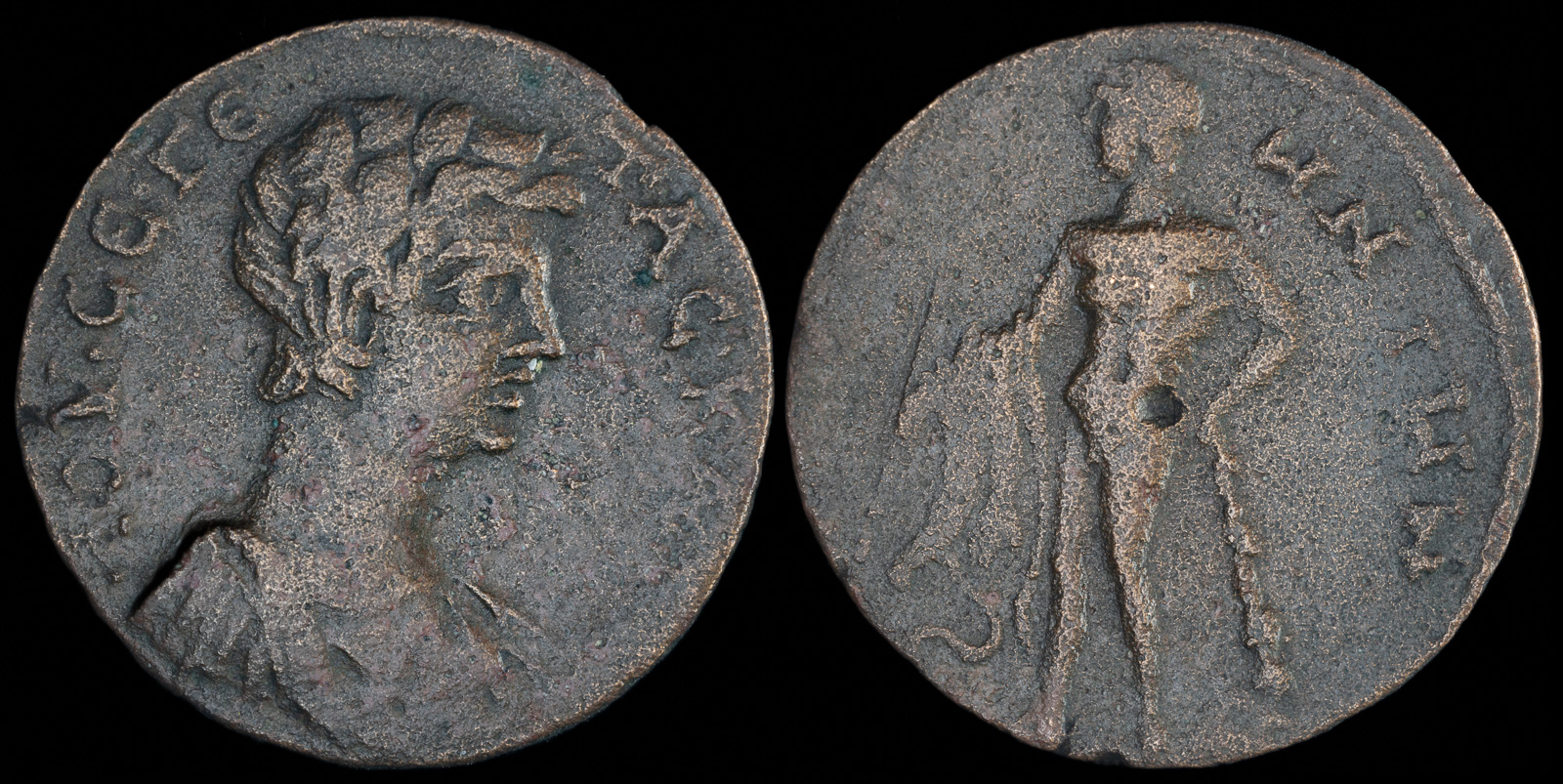
Sikyonia, Sikyon
Geta Caesar, 198-209 CE
Ae 6.45g 23mm
Obv: ΠOY CЄ ΓЄTAC KAI. Bare-headed, draped and cuirassed bust right.
Rev: CIKYWNIWN. Herakles standing left, holding lion skin and resting hand upon club.
BCD Peloponnesos 373.10 var. (Herakles standing right)
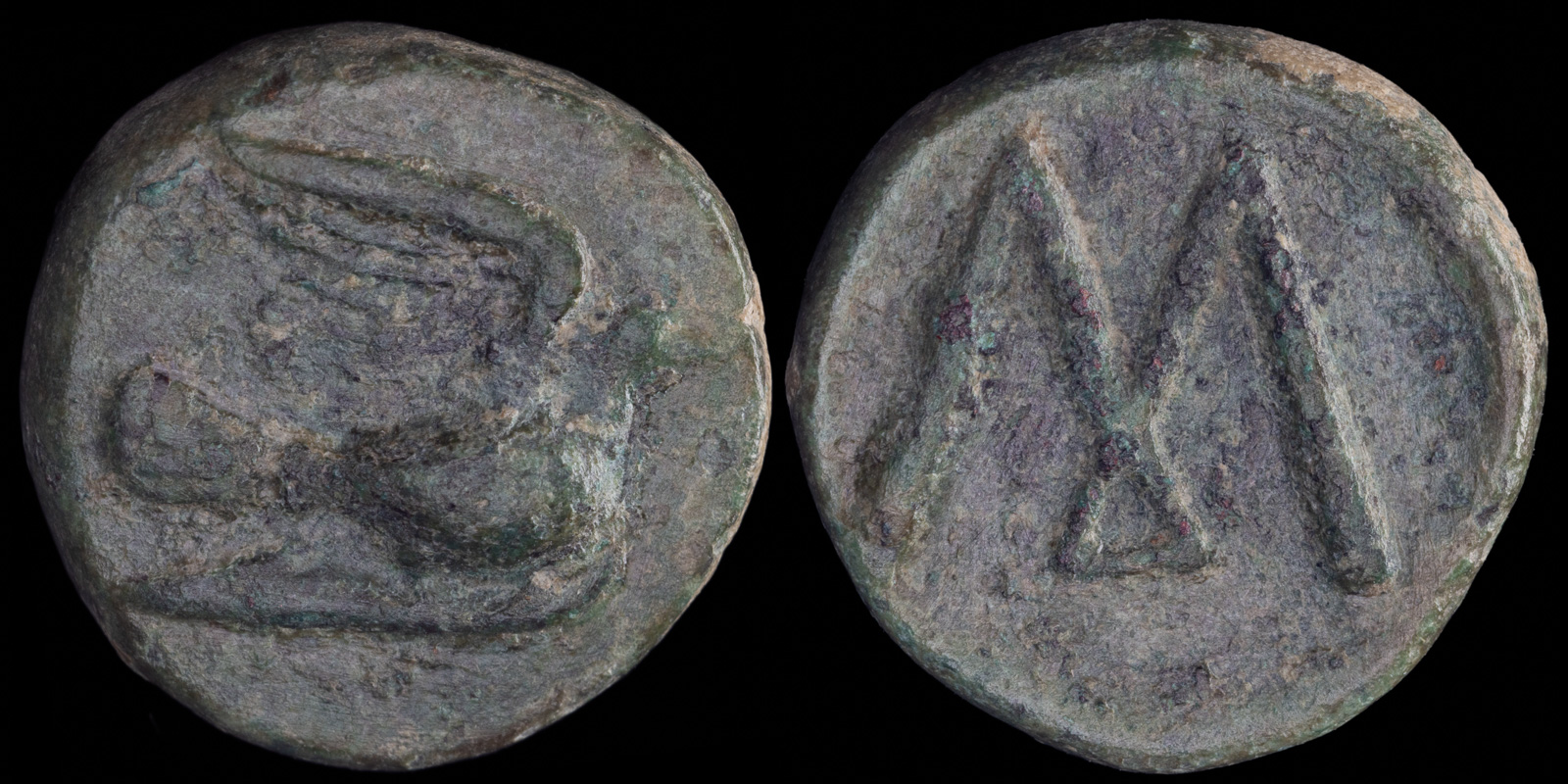
Sikyonia, Sikyon
circa 365/45-335/0 BCE
Ae 3.95g 16mm
Obv: Dove flying right.
Rev: Large letter san oriented vertically; san with Δ below as part of san.
BCD Peloponnesos 15 var. (dove left)
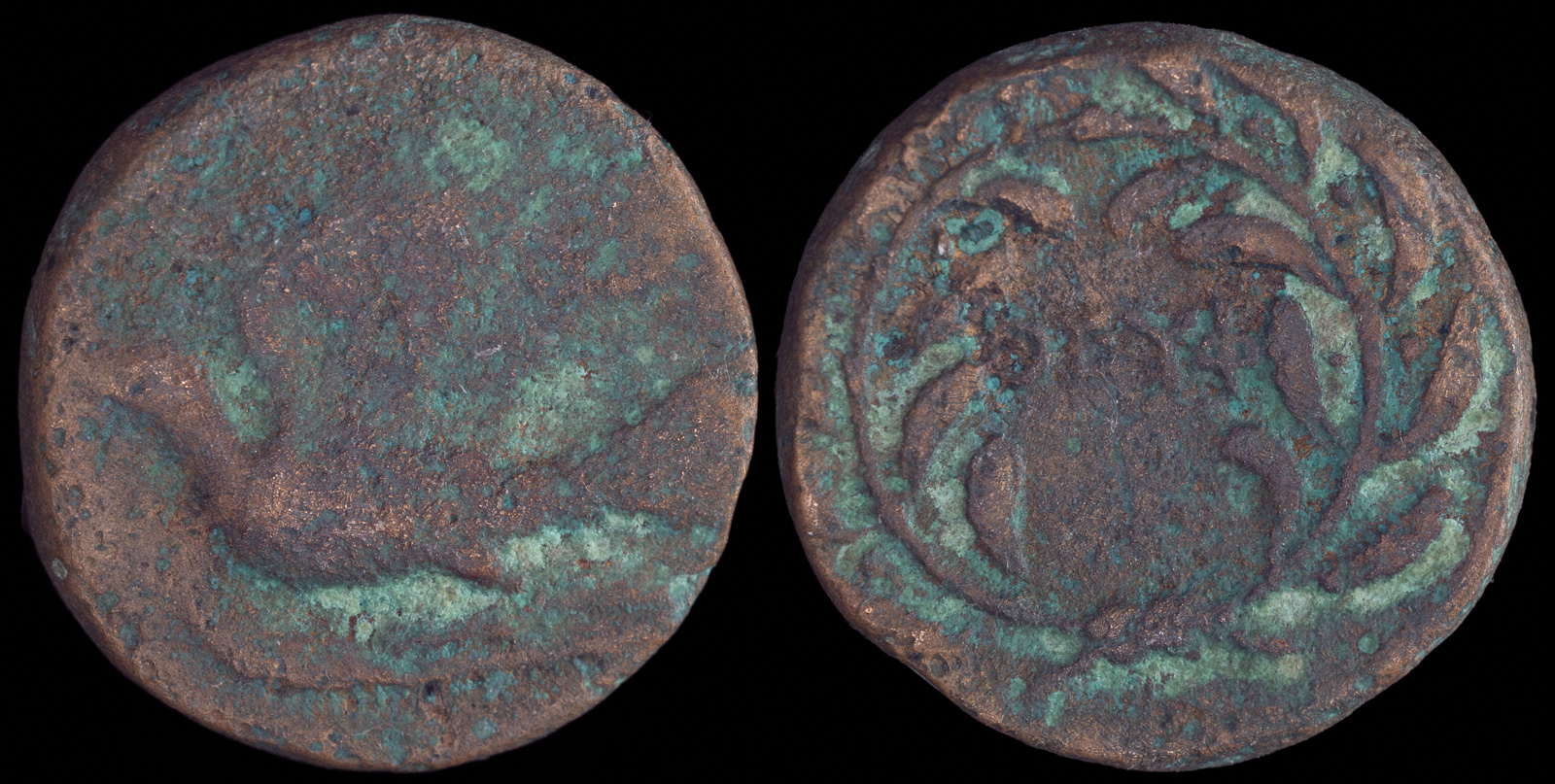
Sikyonia, Sikyon
330-305 BCE
AE 16mm, 3.95g
Obverse: Dove flying
Reverse: Legend in wreath
BCD.307.1 Warren.1998.89
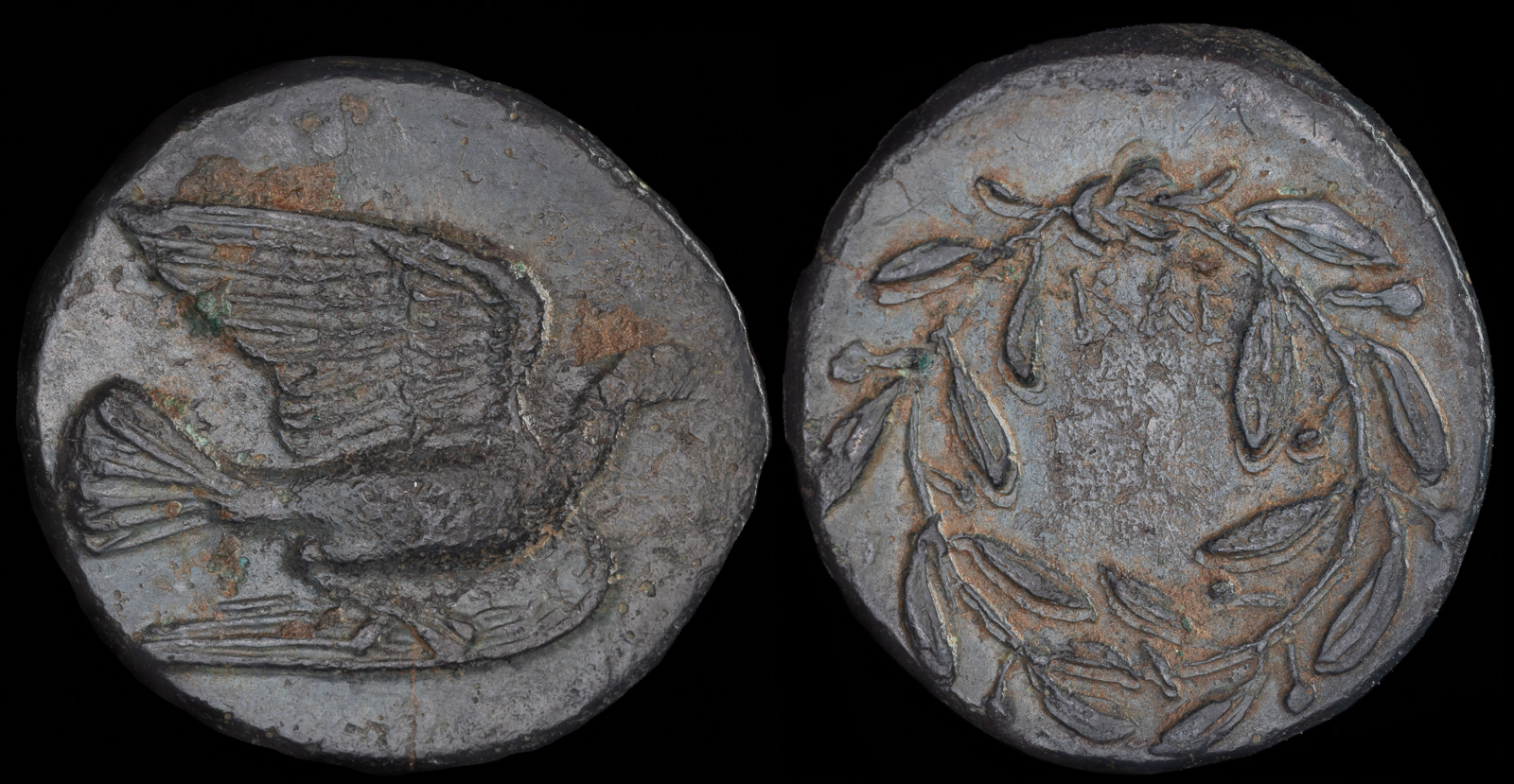
Sikyonia, Sikyon
Circa 330-310/05 BCE
AE Dichalkon 16mm 3.23g
Obverse: Dove flying right
Reverse: Small KAE high in wreath tying above
BCD Peloponnesos 305.9
Kleisthenes becomes tyrant of Sikyon.
Kleisthenes of Sikyon leads the First Sacred War against Phokis and destroys Kirrha.
Approximate end of the tyranny of Kleisthenes of Sikyon.
Sparta crushes Argos at the Battle of Sepeia. Sikyon participates with 12 ships.
August 7
Athens under Tolmides lands at Sikyon and defeats them.
Sikyon is again defeated by Athens, this time under Perikles, though the city is not taken due to help from Sparta.
Athens under Demosthenes invade Sikyon, but are repelled by them.
Sparta and Sikyon march under King Agis against Argos, but a truce is arrived at before battle.
July
Sparta and their allies, including Sikyon and Tegea, defeat Athens and their allies at the Battle of Nemea. On Athens side are Thebes, Lokris Opuntii, and Corinth. With Sparta are Halieis, Sikyon, Epidauros, Troizen, and Hermione. Phlious remains neutral. Pellene fights on the side of Sparta against Thespiai.
July
Sparta and their allies, including Sikyon and Tegea, defeat Athens and their allies at the Battle of Nemea. On Athens side are Thebes, Lokris Opuntii, and Corinth. With Sparta are Halieis, Sikyon, Epidauros, Troizen, and Hermione. Phlious remains neutral. Pellene fights on the side of Sparta against Thespiai.
Thebes attacks Spartan territory in Prasiai. Sikyon rushes to help Sparta.
Euphron becomes tyrant of Sikyon.
Arkadians under Aineas of Stymphalos march to Sikyon and send Euphron into flight.
Euphron flees Sikyon to Thebes, where he is killed.
Alexander, the son of Polyperchon, is assassinated in Sikyon. His wife Kratesipolis takes control of the city.
Kratesipolis wards off the army of Antigonos’ general Telesphoros from Sikyon.
Polyperchon controls much of the Peloponnese, including Corinth and Sikyon.
Demetrios Poliorketes seizes Epidauros, Sikyon, Corinth, Bura, Argos, and Orchomenos.
Demetrios Poliorketes relocates Sikyon to a more defensible location.
Athens and Sikyon form an alliance, the nature of which is not known.
Antigonos II installs the tyrant Kleon at Sikyon.
Antigonos II installs the tyrant Abantidas at Sikyon.
Antigonos II installs the tyrant Paseas at Sikyon.
The tyrant Iseas of Aegira is overthrown by Aratus of Sikyon, a key leader of the Achaean League, who frees the city from local tyranny.
Antigonos II installs the tyrant Nikokles at Sikyon.
Aratos of Sikyon removes the tyrant Nikokles, who Antigonos II had installed. Antigonos II attempts to bribe Aratos but is unsuccessful.
Aratos of Sikyon takes Acrocorinth. The inhabitants of Corinth rise up against Antigonos II.
Aratos of Sikyon takes the Acrocorinth and frees Argos. Xenon steps down in Hermione.
The Spartans under King Kleomenes III defeat the Achaian League under Aratos of Sikyon (and including Argos and Megalopolis) in the Battle of Dyme.
Mantineia is sacked by Antigonos III Doson. The city is handed over to Aratos of Sikyon, who repopulates it and renames it to Antigonia.
The meeting of the Achaian assembly is transferred from Aigion to Sikyon.
A Roman army under Sulpicius Puplius and the Aetolian League ravages Sikyon before being pushed out by Philip V.
197 BCE